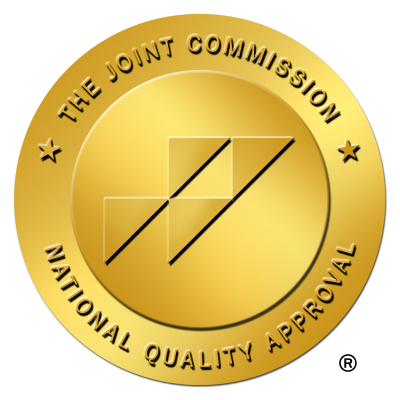The importance of understanding your addiction triggers

Understanding the Landscape of Addiction Triggers
In the journey towards recovery from addiction, understanding triggers is pivotal. Triggers are essentially internal or external stimuli that elicit cravings or emotional responses which can potentially lead to relapse. Recognizing these triggers provides individuals with the insight needed to develop effective coping strategies and ensure long-term sobriety. This article delves into the importance of identifying these triggers, the types and examples of triggers encountered, and how understanding them plays a crucial role in preventing relapse and supporting sustained recovery.
Why Understanding Triggers is Essential
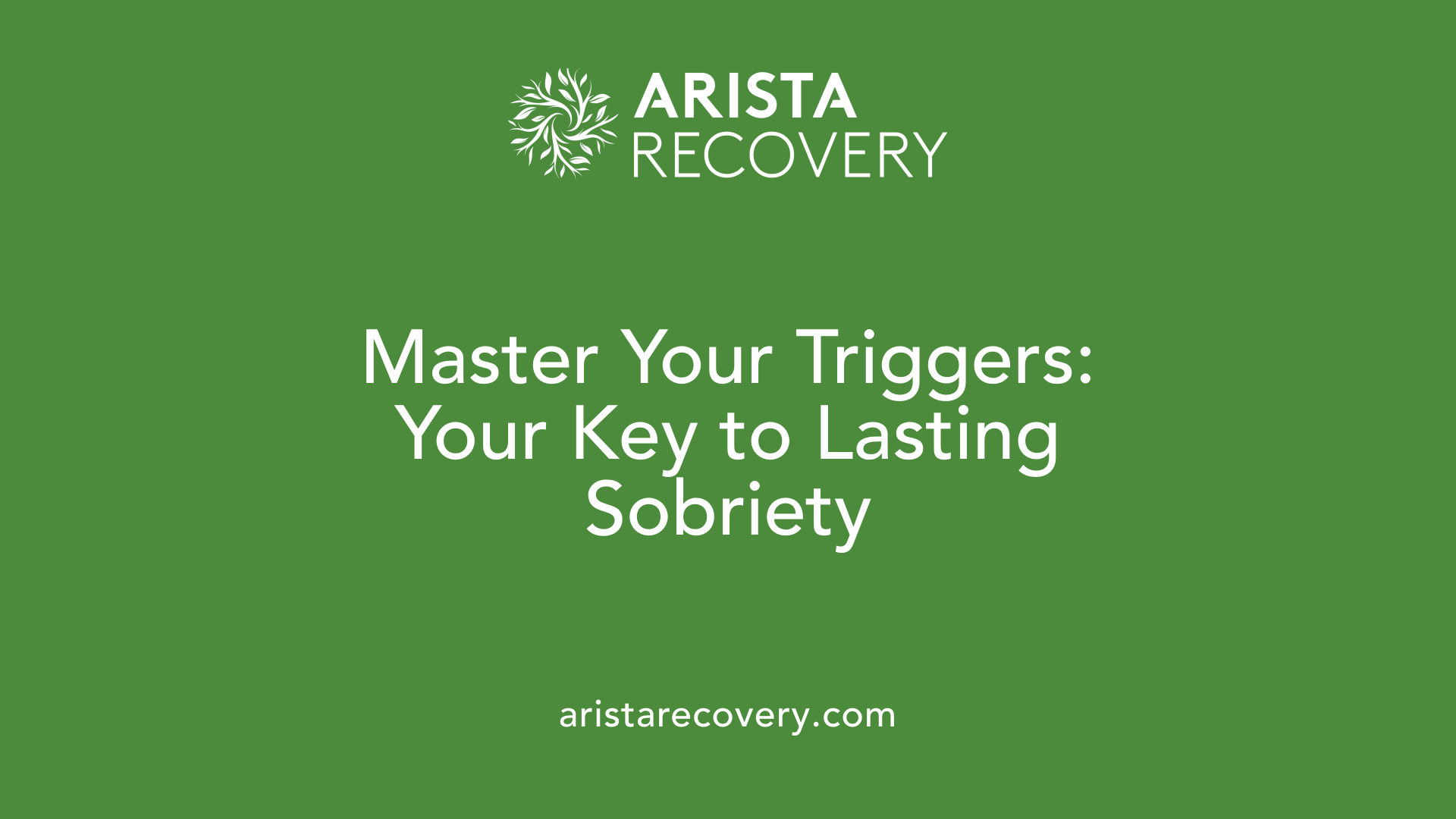
The role of triggers in relapse prevention
Triggers are stimuli—either internal or external—that can evoke cravings or emotional responses linked to past substance use. These triggers can include specific places, people, emotions, or thoughts associated with addiction. When encountered, they often lead to intense desire for substances, increasing the risk of relapse. Recognizing these triggers helps individuals anticipate situations that may threaten their sobriety, allowing them to implement protective strategies.
External cues like visiting bars, being around certain friends, or seeing objects related to substance use are common triggers. Internal triggers—such as feelings of anger, loneliness, anxiety, or guilt—also play a significant role in prompting cravings. Managing these requires awareness and coping mechanisms to prevent impulsive actions.
How understanding triggers supports sustained sobriety
Awareness of personal triggers empowers individuals in recovery to avoid risky environments or emotional states that could lead to relapse. Developing personalized coping strategies like mindfulness, physical activity, or seeking support helps mitigate the impact of triggers.
Structural techniques, including journaling to identify high-risk moments and working with professionals, strengthen the individual's ability to handle triggers effectively. By proactively confronting triggers and having a plan in place, individuals can maintain their sobriety even when confronted with stressors or temptations.
Significance of identifying personal triggers
Every person’s triggers are unique, making personalized identification crucial. Recognizing what specific sights, sounds, feelings, or situations prompt cravings allows tailored treatment and coping tools.
Methods such as trigger diaries, therapy sessions, and self-reflection foster this awareness. Once identified, these triggers can be addressed through various strategies like avoiding certain environments, engaging in healthy routines, or practicing relaxation techniques.
Ultimately, understanding your triggers is fundamental in preventing relapse, supporting long-term recovery, and building resilience against future challenges.
| Trigger Type | Examples | Managing Strategies |
|---|---|---|
| Environmental Triggers | Visiting old neighborhoods, being in bars, seeing paraphernalia | Avoidance, environment restructuring, support systems |
| Emotional Triggers | Anger, guilt, loneliness, boredom | Mindfulness, therapy, emotional regulation techniques |
| Social Triggers | Interactions with exes or substance-using friends | Setting boundaries, social support, alternative activities |
Types and Examples of Addiction Triggers
What are common triggers of substance abuse relapse and how can they be avoided?
Relapse triggers are specific situations, feelings, or external cues that can lead individuals back to substance use. These triggers are broadly categorized into internal and external types.
Internal triggers mainly include emotional states such as stress, anxiety, depression, anger, guilt, and loneliness. Physical sensations like fatigue or discomfort can also serve as internal cues that prompt cravings. For example, feeling overwhelmed or ashamed might increase the urge to relapse.
External triggers involve environmental and social factors. Common examples include visiting places associated with past substance use—like bars, clubs, or neighborhoods. Encounters with certain people, such as friends from early addiction days or acquaintances who still use substances, can also stimulate cravings. High-risk situations like holidays, social gatherings, or changes in routine often serve as external triggers.
Recognizing these triggers is crucial. Many individuals keep trigger diaries or journals to notice patterns in what prompts their cravings. Once identified, targeted strategies can be implemented.
Prevention involves multiple approaches. Developing a relapse prevention plan is vital, which may include avoiding certain environments, setting personal boundaries, and strengthening support networks. Engaging in healthy activities, such as exercise or hobbies, helps replace old routines associated with substance use.
Mindfulness and relaxation techniques, like deep breathing or meditation, reduce stress and improve emotional regulation. Additionally, seeking ongoing professional support through therapy or support groups can provide tools and reassurance.
Building awareness and having a proactive plan reduces the likelihood of succumbing to triggers. Education about personal triggers empowers individuals to navigate social situations and stressful moments more safely.
Ultimately, understanding and managing triggers is a continuous process, integral to long-term sobriety and recovery.
The Connection Between Triggers and Cravings
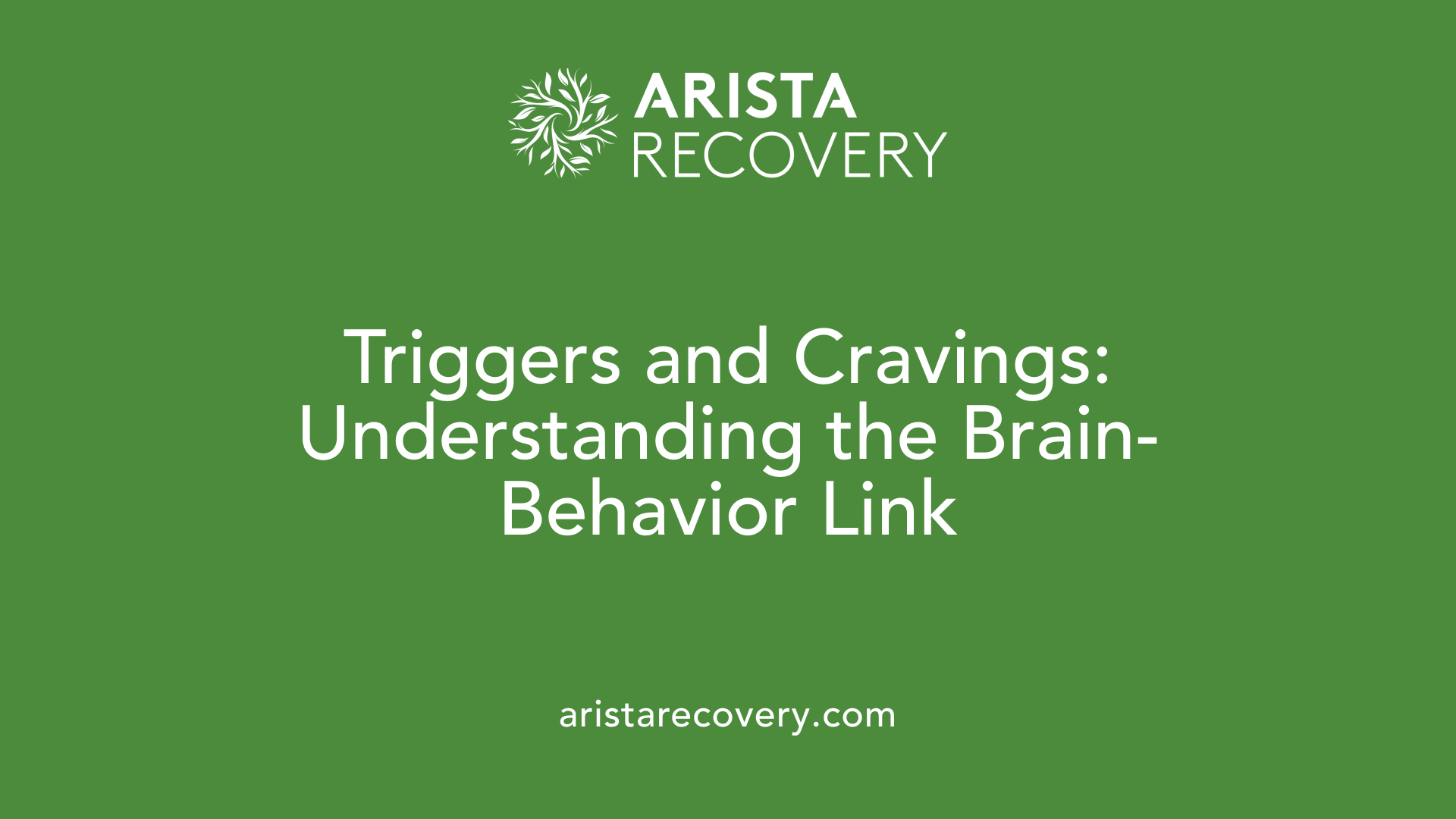
How triggers lead to cravings and emotional responses
Triggers are stimuli that evoke strong memories, feelings, or sensations related to past substance use. They can be external, such as seeing a place associated with drug use or hearing certain sounds, or internal, like feelings of loneliness, anger, or guilt. When someone encounters a trigger, it often sparks an emotional reaction—such as anxiety, excitement, or despair—and sets a craving into motion.
For example, being in a neighborhood known for drug activity or having a stressful argument can act as triggers, making the individual think about using substances again. These reactions are not just mental—they also involve physical sensations like tightness in the stomach, nervousness, or an increased heart rate. Recognizing these signals early can help individuals prepare to manage their responses.
Neurobiological responses to triggers
On a neurobiological level, triggers activate brain regions involved in reward and emotion, such as the amygdala, hippocampus, and prefrontal cortex. When a trigger is encountered, the brain releases neurochemicals like dopamine, which intensify the desire or craving for the substance.
This dopamine surge creates a chemical reward that reinforces the connection between the trigger and the substance, strengthening the desire to relapse. Over time, repeated exposure to triggers without proper coping can make cravings more hard to resist, especially during stressful or emotionally charged situations.
Managing urges prompted by triggers
Effective management of cravings starts with awareness. Recognizing immediate physical and emotional reactions allows individuals to implement coping strategies before cravings escalate.
Strategies include deep breathing, engaging in physical activity, or practicing mindfulness to calm the mind and body. Building a strong support system—talking to a sponsor, therapist, or trusted friend—can provide emotional relief.
Developing a relapse prevention plan, which involves avoiding high-risk situations and preparing for inevitable triggers, is critical. This plan might include keeping a trigger diary, practicing stress management techniques, and developing personalized coping mechanisms.
By understanding how triggers translate into cravings, individuals can better control their responses and reinforce their commitment to recovery. Managing urges effectively reduces the risk of relapse, supporting long-term sobriety.
Identifying and Recognizing Personal Triggers
Techniques for identifying triggers
Recognizing triggers is a vital step in recovery, helping individuals avoid situations that could lead to relapse. One effective method is journaling or keeping a trigger diary, where individuals record feelings, thoughts, places, and people involved during moments of craving or emotional distress. Reflecting on these entries highlights patterns and high-risk situations.
Mindfulness practices also assist in noticing subtle emotional or physical cues that precede a craving. Deep breathing, checking in with one’s body, and pausing before reacting can reveal internal triggers such as stress or shame.
Personalized approaches to recognizing triggers
Everyone’s triggers are unique. Some may respond strongly to certain environments, like bars or social settings, while others might be influenced more by emotional states like loneliness or anger. Tailoring strategies involves understanding personal history and emotional responses.
Engaging in regular therapy or assessments with a counselor helps uncover triggers particular to individual experiences. Participating in group support sessions offers insights through shared stories, helping identify common personal triggers.
Role of self-awareness
Building self-awareness is crucial for early recognition of triggers. This involves paying close attention to feelings, thoughts, and physical sensations that emerge during daily routines. The more aware a person is of their internal states, the better they can apply coping strategies like mindfulness or distraction techniques before cravings escalate.
Practicing self-awareness also entails acknowledging emotional reactions without judgment, understanding that distress or discomfort are natural parts of recovery. This awareness fosters resilience and prepares individuals to navigate high-risk situations more effectively.
Managing and Coping with Triggers
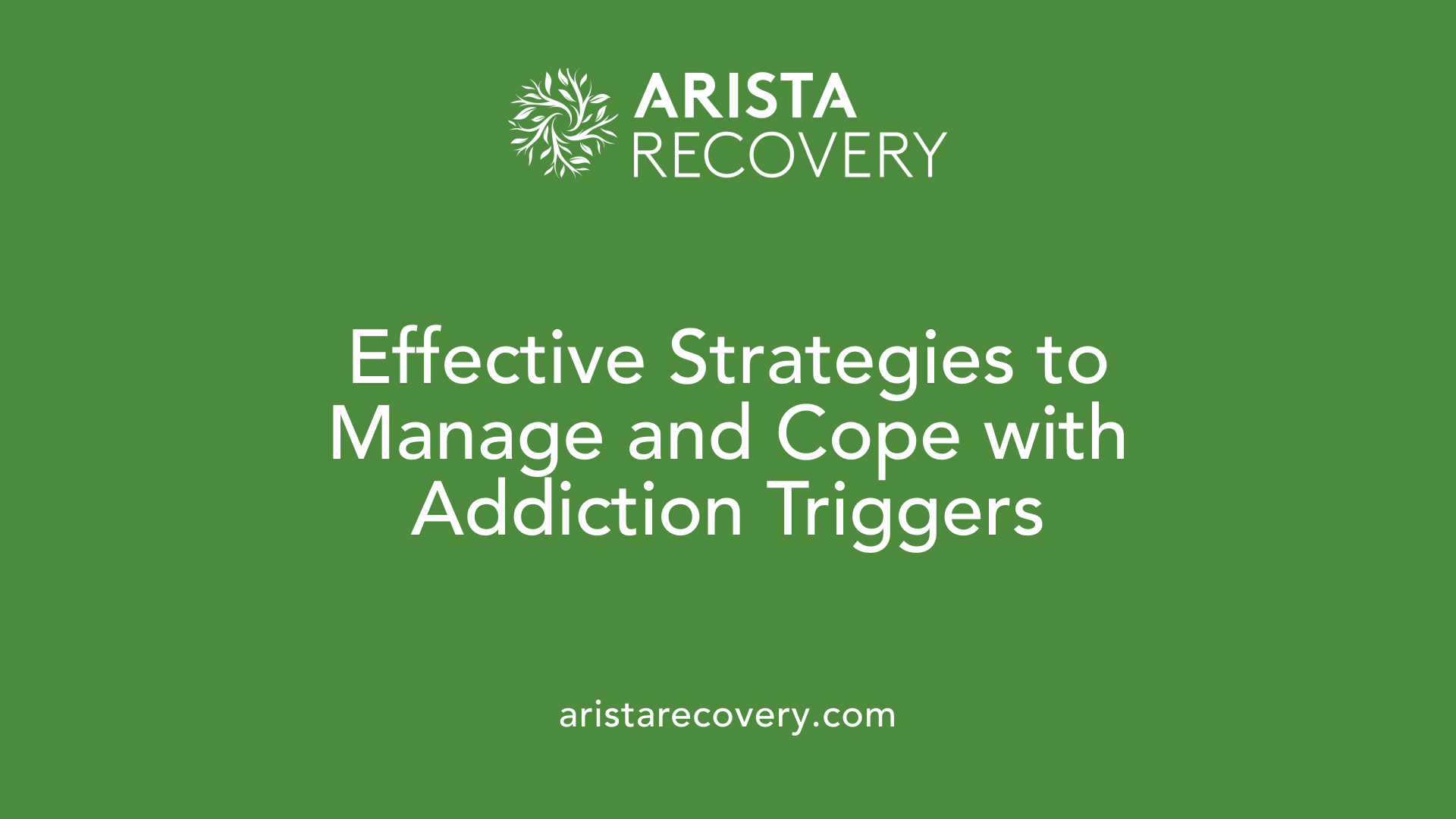
Strategies for coping with triggers
Individuals in recovery can develop personalized techniques to handle their triggers effectively. Engaging in physical activities such as exercise or yoga can reduce stress and divert attention from cravings. Practicing mindfulness through deep breathing exercises, meditation, or grounding techniques helps center thoughts and calm emotional reactions.
Creating a daily routine with healthy habits — including nutritious meals, adequate sleep, and scheduled activities — minimizes vulnerability to triggers. Journaling about experiences and feelings related to triggers can increase self-awareness and identify patterns, making it easier to plan appropriate responses.
Relapse prevention techniques
To prevent relapse, individuals should learn to recognize warning signs, such as negative thoughts, feelings of overwhelm, or physiological cues like stomach tightness or nervousness. Once aware, they can implement coping strategies like calling a support person, engaging in a hobby, or practicing self-care.
Developing a support network, including therapists, support groups, or trusted friends, is vital. Meeting regularly, sharing experiences, and receiving encouragement reinforce resilience. It also offers accountability, helping individuals stay committed to recovery.
Planning ahead for high-risk situations is crucial. This includes avoiding certain environments, having an exit strategy if cravings intensify, and preparing responses for emotional triggers like anger or loneliness.
Engagement with support systems
Active involvement in support groups such as AA or NA provides ongoing encouragement and accountability. These groups foster a sense of community, reduce feelings of isolation, and enable sharing of coping strategies. Especially during moments of distress or temptation, talking to peers who understand the journey can be remarkably beneficial.
Professional support through therapy, especially cognitive behavioral therapy (CBT), assists in restructuring negative thought patterns and developing healthy coping skills. Therapists can help individuals explore underlying emotional triggers and work through unresolved issues.
Moreover, comprehensive recovery plans often include medication management when appropriate, which can help reduce cravings and stabilize mood, making triggers less impactful. Regular check-ins with healthcare providers ensure adjustments are made as needed.
By combining proactive trigger management, healthy lifestyle choices, and strong support networks, individuals in recovery can strengthen their resilience and maintain long-term sobriety.
The Role of External and Internal Triggers
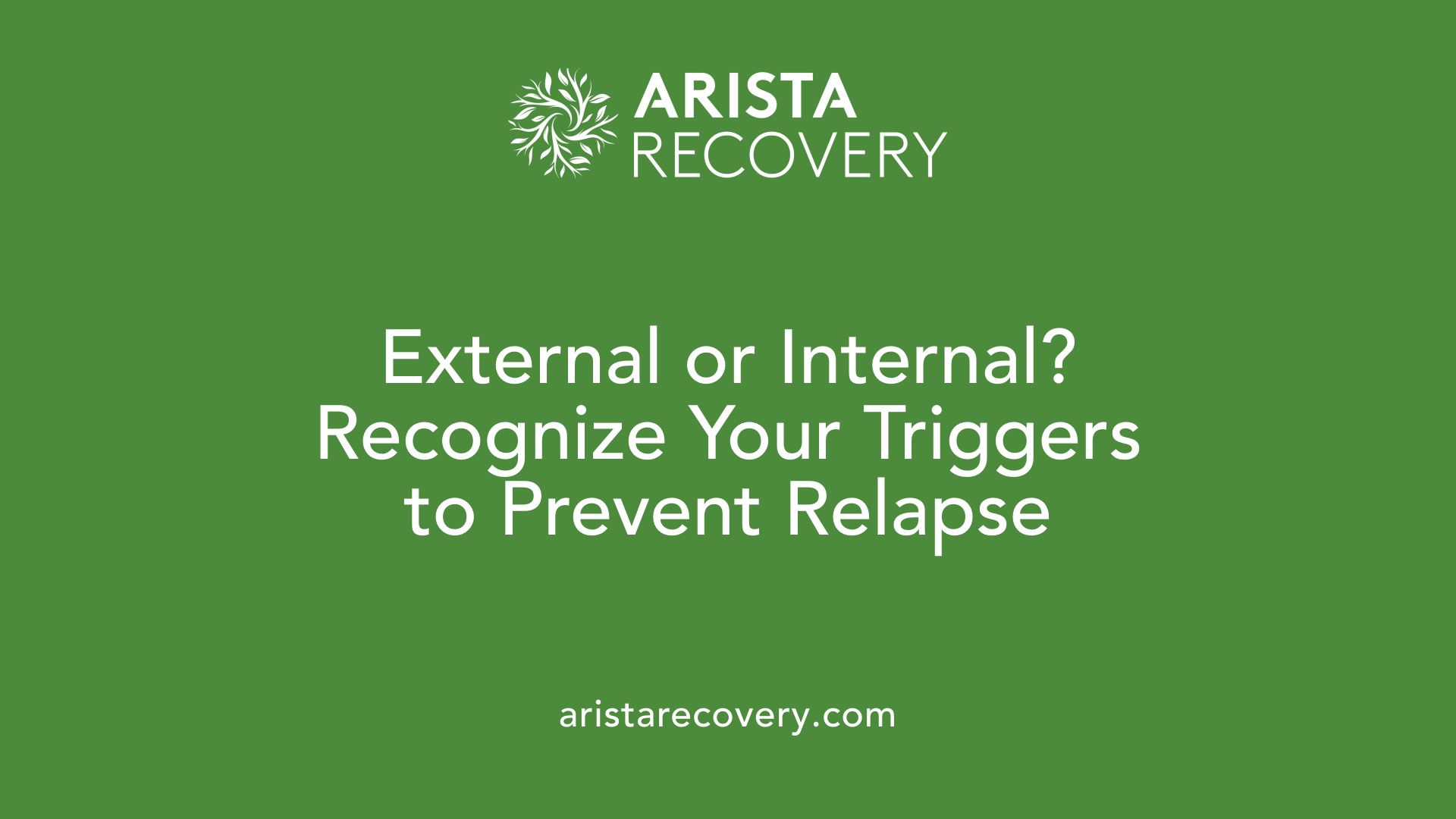
Impact of external vs. internal triggers
In addiction recovery, understanding the difference between external and internal triggers is essential. External triggers are environmental cues or situations that remind individuals of past substance use. These can include places like bars, neighborhoods, or social settings with friends where substance use occurred.
Internal triggers, on the other hand, are emotional or psychological reactions within a person. These include feelings like stress, anxiety, guilt, sadness, or boredom. Internal triggers often lead to cravings and can be just as powerful as external cues.
Both types of triggers can increase the risk of relapse if not properly managed. Recognizing and addressing them with appropriate coping strategies is crucial.
Examples of internal triggers such as emotions and stress
Internal triggers involve feelings and thoughts that activate cravings. Common emotional triggers include anger, loneliness, depression, and low self-esteem.
Stress is a significant internal trigger, often causing individuals to seek relief through substances. Feelings of guilt, shame, or trauma can also surface, prompting cravings as a way to numb emotional pain.
Practicing mindfulness, engaging in therapy, and developing healthy coping skills can help manage these internal triggers.
Examples of external triggers like environments and people
External triggers are situational cues that remind someone of previous substance use. These include visiting certain places such as homes of friends who use drugs or alcohol, or environments like bars and nightclubs.
People associated with past substance use, such as friends or ex-partners, can also trigger cravings through social interactions.
Objects related to substance use, such as drug paraphernalia or specific utensils, serve as visual cues. Significant dates, holidays, or routines that involve substance use are additional external triggers.
Managing external triggers often involves avoiding high-risk environments, planning alternative activities, and seeking social support to navigate challenging situations.
Implications of Triggers in Sustained Recovery
How understanding triggers aids in long-term recovery
Understanding what triggers a craving or emotional response is vital for anyone working toward sustained sobriety. Triggers can be internal, like feelings of guilt, anger, or depression, or external, such as places, people, or objects associated with past substance use. Recognizing these triggers helps individuals develop tailored coping strategies, such as mindfulness, exercise, or seeking support, to prevent relapse.
This awareness allows for proactive planning, where individuals can avoid high-risk situations or prepare their responses if avoidance isn't possible. For example, avoiding certain social settings or having a safety plan involving trusted friends or sponsors can make a significant difference. Over time, managing triggers reduces their power, fostering resilience and supporting long-term recovery.
Educational insights into the significance of triggers
Educational efforts emphasize that triggers are not necessarily causes of relapse but are stimuli that make resisting cravings more challenging. They often evoke memories or emotions tied to past substance use, such as stress, loneliness, or boredom.
External triggers, like visiting a favorite bar, and internal triggers, like feelings of anxiety, must be identified to manage them effectively. Techniques such as journaling or trigger diaries help in recognizing personal patterns. Therapy, especially cognitive behavioral therapy (CBT), equips individuals with tools to challenge negative thoughts and reinforce healthy behaviors, reducing the impact of triggers.
Understanding triggers as emotional reactions related to frustration or unaddressed trauma broadens the perspective on addiction, highlighting the importance of emotional self-awareness and resilience building in recovery.
Professional support and self-help techniques
Professional support plays a crucial role in managing triggers. Therapies like CBT help individuals identify and modify thought patterns that lead to cravings. Support groups and counseling offer a space to share experiences and learn coping mechanisms.
Self-help strategies include practicing mindfulness, engaging in physical activities, maintaining routines, and developing a trigger management plan. Distraction techniques, such as engaging in hobbies or socializing, are useful during moments of high risk.
Additionally, medications like Naltrexone or Acamprosate can help reduce cravings when appropriately prescribed. Combining professional guidance with personal effort increases the likelihood of maintaining sobriety by addressing triggers effectively and sustainably.
Navigating Triggers for a Successful Recovery
Understanding and managing addiction triggers is a crucial component of a successful recovery journey. Whether facing internal emotions or external environmental factors, knowing what fuels cravings can empower individuals to develop effective coping strategies. Reflective practices, ongoing education, and support systems are key to navigating these challenges. With a comprehensive approach to recognizing and addressing triggers, sustained sobriety becomes an attainable goal, securing a healthier future free from the bonds of addiction.
References
- Why Knowing Your Triggers is Crucial to Recovery
- How Do I Handle Triggers? - Addiction Center
- A Guide for Navigating Triggers and Temptations
- Common Relapse Triggers and How to Avoid Them
- The Importance of Identifying Addiction Triggers
- Understanding addiction triggers - Priory
- Teen Substance Use Triggers - Foothills at Red Oak Recovery
You’re not alone in this.
When mental health challenges and addiction intersect, it can feel isolating. At Arista, we offer compassionate, evidence-based, and trauma-informed care to help you heal, grow, and move forward.
You’re not alone in this.
When mental health challenges and addiction intersect, it can feel isolating. At Arista, we offer compassionate, evidence-based, and trauma-informed care to help you heal, grow, and move forward.
Support that moves with you.
You’ve taken a brave first step. At Arista Recovery, we’re here to help you continue with best-in-class care designed for long-term healing and support.
.webp)






